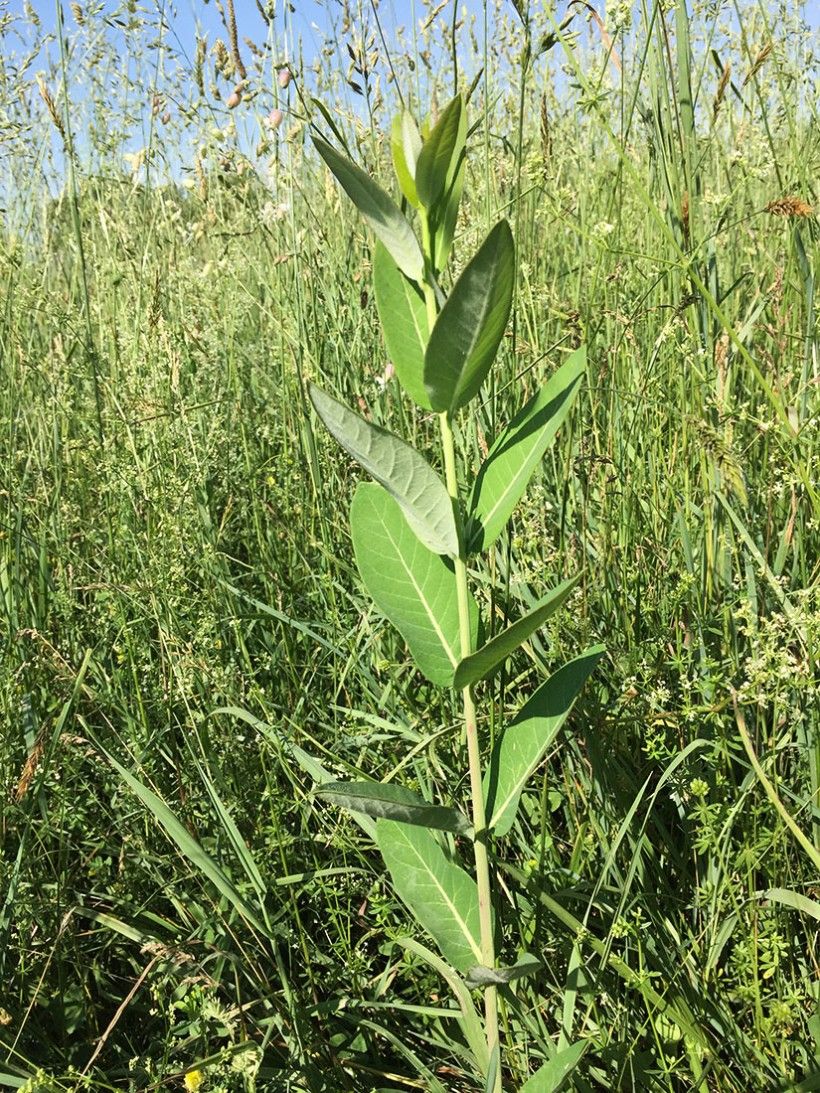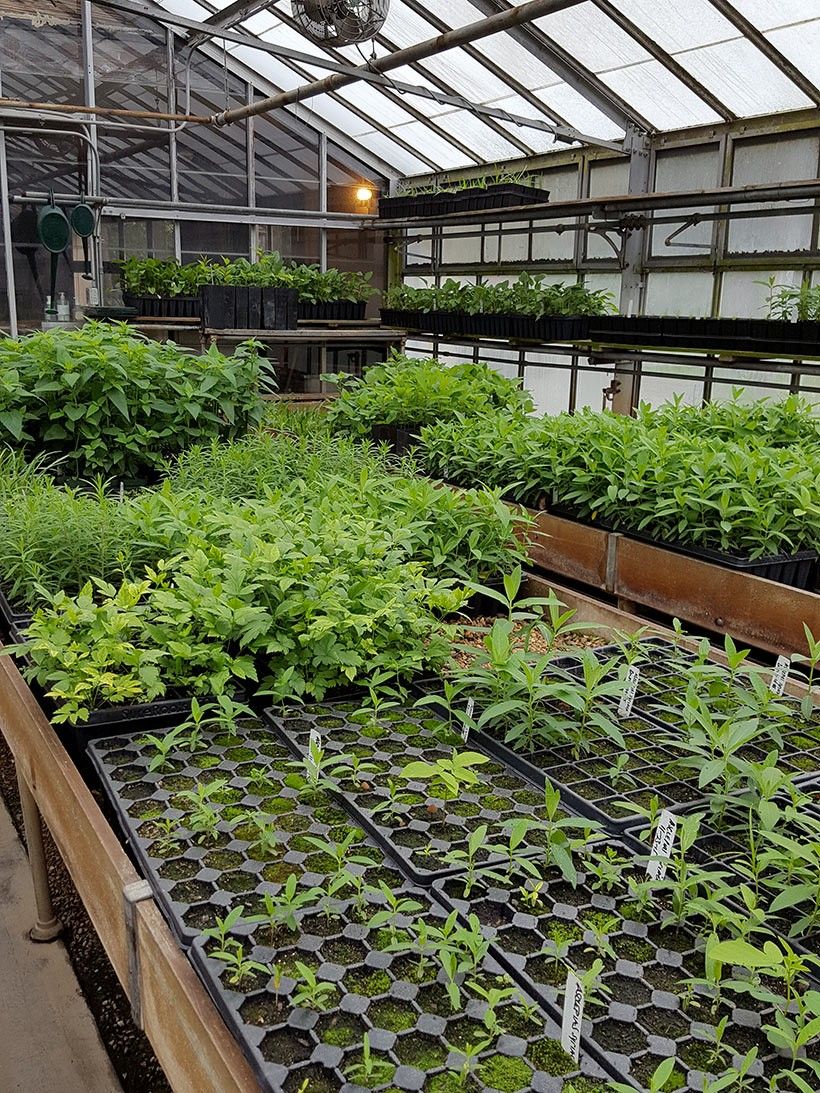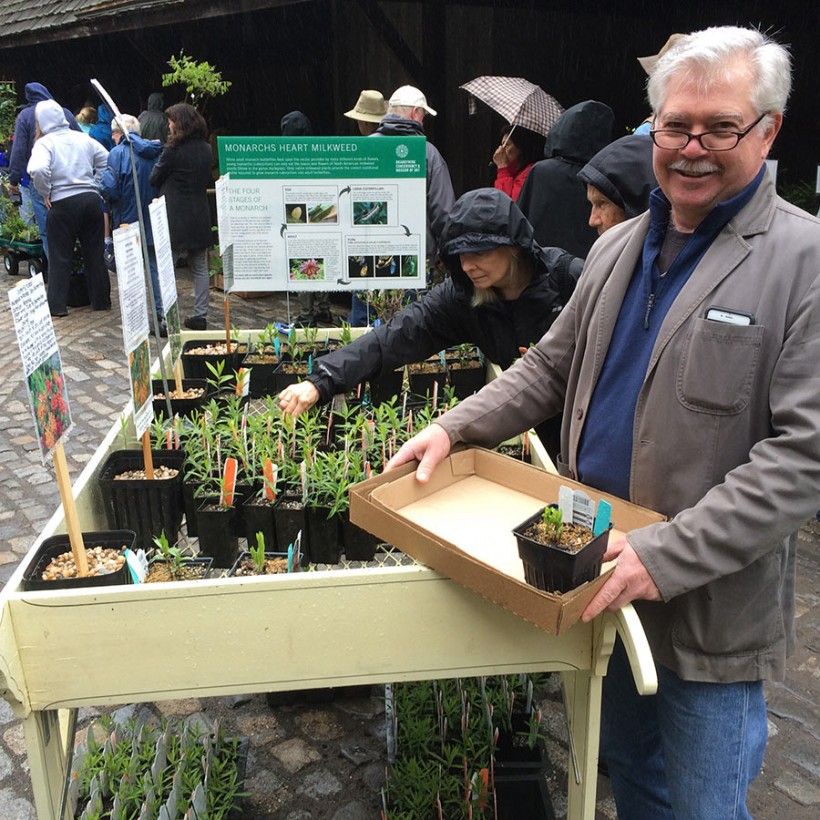Experts often recommend planting milkweed to help the declining monarch population because it is the sole food source for the monarch caterpillars. These insects breed as they migrate north in the spring, cycling through four generations during the journey. Each of those generations is entirely dependent on milkweed as the host plant for the caterpillars. While the decline in the milkweed population is only one of several factors affecting monarch populations, planting more of it will likely give the monarch population a boost. However, as gardeners and horticulturists know, milkweed plants are often hard to find in commercial nurseries.


As part of our native plant program at Brandywine, we have for many years collected and sold seeds from three milkweed species native to our region, and tried to have plants available for our annual spring native plant sale. However, having all three milkweed species available was never an easy task. Common milkweed (Asclepias syriaca) has a wandering root system and won’t grow in a pot for long. For this reason, it is difficult to sustain the plant over the winter and have it available for spring sales. Butterflyweed (Asclepias tuberosa) is also very hard to grow in a pot, possibly due to its very deep root system. It can sometimes be procured from an outside supplier, but it is often unavailable for spring sales. We have been able to consistently germinate and grow swamp milkweed (Asclepias incarnata), as it is relatively easy to grow in a container, but butterflyweed and common milkweed were usually missing from our native plant sale. That is, until now.
Thanks to a bequest by Richard Scaife in 2014 of an estate known as Penguin Court, the Conservancy was given a rare opportunity. The 923-acre property in Ligonier, Pennsylvania contains a large greenhouse and several walk-in refrigerators that can be used for germinating and growing plants. Milkweed seeds were collected from the Penguin Court property, cleaned, cold conditioned in the refrigerators, germinated and grown in the greenhouse, and sold at our spring plant sale. Neither common milkweed nor butterflyweed like the cold, so growing them in the greenhouse reduced additional stressors and ensured their survival through the early spring so they would be available for the spring plant sale.

In addition to supplying our native plant sale, many of the milkweed plants grown at Penguin Court will be planted on the Brandywine campus in our Monarch Migration Station, providing additional food for the caterpillars during their journey north, as well as nectar for the adult butterflies as they travel south to Mexico in the fall.
We are doing our best to protect habitat for monarchs and other pollinators. Now, you can too! Stop by our native plant sale next year for a milkweed plant or visit the Gift Shop at the Brandywine River Museum of Art to purchase or order seeds from our seed program all year long.